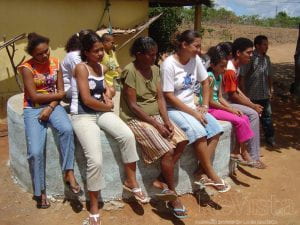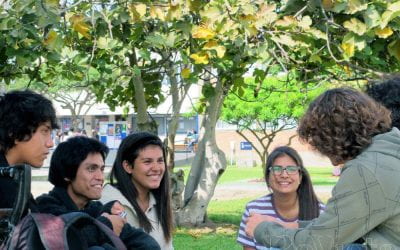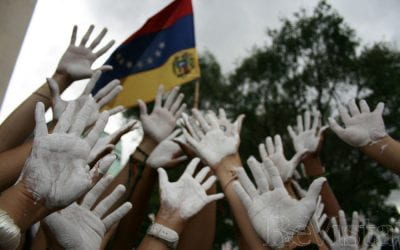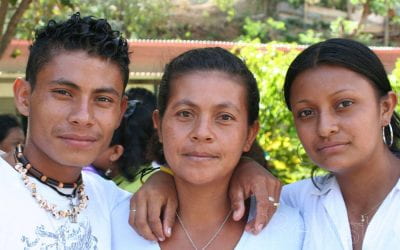Affirmative Action in Brazil
Affirmative action policies can take a person’s race into account, the Brazilian Supreme Court unanimously ruled on April 26, 2012. The Court found the use of racial quotas constitutional, allowing both public and private higher educational institutions to reserve a certain percentage of slots for undergraduate students, most of them, coming from public secondary schools.
The Supreme Court ruling helps consolidate these new admission policies in an important way. A huge national public debate had swept Brazil because of the use of ethnic or racial criteria—blacks, browns (pardos) and “quilombo holdovers”–on the definition of potential grantees of these policies.
However, even with the Supreme Court’s backing, the Brazilian government does not have the power to obligate education institutions to implement these policies. In general, the decision about adopting such policies is made in one of two ways. The first is through the approval of University Councils (Conselhos Universitários), governing boards whose autonomy is guaranteed by the Law of Guidelines and Bases of Education. The second way in which higher education affirmative action can be adopted is through local state laws, adopted by state legislative assemblies. These two forums of discussion and decision reinforce the political aspect of affirmative action since they give rise to constant negotiations, with decisions often the direct result of social pressure from society and social movements.
To understand what is new about affirmative action in Brazil, we must consider the historical and political context of its emergence. Following that general picture, I will spotlight the “Program of University for All” (ProUni), the biggest program of affirmative action implemented in Brazil, an innovative system that has received relatively little attention.
The Context
Economic growth in Brazil faces a big obstacle: its local labor force is poorly qualified because of inadequate investment in education. Universal primary school education didn’t even get going in Brazil until the late 1980s. Even today, elementary school students perform poorly in math, science, and reading and writing literacy. Widespread access to high school took place only in the 1990s; only half of all youngsters between 15-and 17 years of age now go to high school. At the university level, the situation is even worse: only 14.4 percent of Brazilian 18-to 24-years-olds were enrolled in higher education schools in 2009. This rate is considered unsatisfactory when compared to international patterns, including those of some neighboring countries such as Chile, Argentina and Uruguay.
Despite the persistence of inequalities, racial equity in the university system has definitely improved in the past ten years. In 1999, only 7 percent of black youngsters between 18-and 24-years-old were enrolled in colleges and universities, compared to 33 percent of whites. Ten years later, 30 percent of black and 60 percent of white youngsters were studying in schools of higher education. These advances are very recent, and continued investments need to be made in the quality of education and expansion of access to reduce social and racial inequalities.
Measuring the effective expansion of the higher education system can be done by measuring the numbers of students graduating as well as the number of new student slots available to potential freshmen nowadays. In this aspect, Brazil has showed important advances since the end of the 1990s. Between 1999 and 2008, the number of undergraduates surged from 1,534,000 to 6,148,000—although growth rates have declined for the last four years. The number of institutions—especially private ones—has also increased significantly. At the present time, 89.5 percent of higher education institutions in Brazil are private.
The quality of higher education is the biggest challenge. Two fundamental issues are the dichotomy between public and private institutions and the distinction between universities and colleges. In general, the public system provides better quality education, but both private and public higher educational institutions are very uneven. Universities make up less than 10 percent of the entire higher education system, with 53 percent of those public and 47 percent private. Thus, affirmative action in public universities represents only 5 percent of higher education. Private colleges—mostly providing low-quality education—predominate.
Yet more and more students have gained access to education, thus decreasing social and racial inequalities. More students are graduating from high school, thus feeding into the university system, and access to higher education in Brazil is less unequal now than 13 years ago. Increasing social and
political demands for inclusion have generated policies of expansion of the higher education system and affirmative action, confirmed this year by the
Supreme Court.
Affirmative Action in a Brazilian Way
The history of affirmative action in Brazil begins in December 2000. On that date, Anthony Garotinho, governor of Rio de Janeiro state, approved a local law reserving half the available slots available in undergraduate courses of public universities in Rio de Janeiro for students who had attended public high school. In November 2001, he approved another law establishing that 40 percent of the vacancies under the 2000 law must be reserved for black and brown students.
Since then, an increasing number of Brazilian universities have incorporated affirmative action policies into their admission processes. Intense debate about the place of affirmative action in Brazil revolves around two constituent elements of the Brazilian race relations system: racial identity and the dilemma of the relationship between race and class.
Many criticize affirmative action policies because they institutionalize the category of race. Those who take this standpoint say that the Brazilian state should not implement policies making use of racial criteria since this position strengthens the assumption of the existence of distinctive races. Indeed, they claim that this affirmative action model would contradict the traditional concepts of race and racism in the country (which prides itself on being “race-blind”). These opponents of affirmative action policies say that the only way to face racism is to challenge the very notion of race. Affirmative action supporters respond that some social groups in Brazilian society exist identify themselves and are identified by markers connected to the notion of race (racial markers). By the same token, strong social hierarchies prevail in Brazil, with the resulting inequalities and discrimination produced by these racial markers, reinforcing this racial system. Therefore, supporters say that it is legitimate for the Brazilian state to create and promote racially oriented policies to benefit individuals who suffer discrimination is based on racial markers.
Other critics of affirmative action points to the difficulties or impossibility of defining who is black in Brazil, because of its history of racial mixing, a process often proudly considered as a symbol of national identity. The question of racial identity had been debated in Brazil long before the issue of affirmative action arose, but it has become more complex given selection of rights based on racial criteria. Affirmative action in Brazil is, in part, academically justified and legitimated by statistical studies on racial inequalities that make use of official data. Many of these studies lump black and brown into the same group with the label of “negros” or “afrodescendentes” (blacks or African-heritage Brazilians). The justification for this procedure is based on statistical analysis since the two groups present similar rates and performance (see Nelson doValle Silva,”Updating the cost of not being white in Brazil” in Pierre Michel Fontaine. Race, Class and Power in Brazil, Los Angeles: UCLA, 1986, pp. 42-55). However, what is highly polemical is that affirmative action policies transform racial classification into racial identity. Some critics claim this categorization is based on a strategy, mainly led by black movements, to transform the descriptive categories “blacks” and “browns” into the political category negros, thereby generating an unfamiliar racial bipolarization between “negros” and “whites” into Brazilian race relations.
Some affirmative action opponents charge that class-based policies would be sufficient and effective in combating racial inequalities, since in Brazil most poor people are black and brown. There are two counter-arguments to this perspective. First, statistical analyses show that racial distinctions exist among the poor, since social mobility is unequally distributed between blacks/browns and whites. Second, the Brazilian state and society have been historically indifferent to poor people mainly because they are mostly black or brown. In this sense, access to the higher education system through affirmative action is important because it allows entry into a place of former middle-and upper-class privilege mainly occupied by whites.
According to an analysis by João Féres Júnior, coordinator of Group of Multidisciplinary Studies of Affirmative Action, 90 percent of public universities using some type of ethnic or racial criteria in their admission processes follow socio-economic guidelines as well. Only four universities in Brazil apply purely racial criteria in their admissions process (http://gemaa.iesp.uerj.br/).
The ProUni Case
The controversy about affirmative action in Brazil has focused on public universities, a small but significant part of the Brazilian higher education system. Although the Brazilian government is an important actor in affirmative action policies, it does not have the power to force public institutions to include these policies as part of their admission processes. The only national program designed and managed by the federal government is the “University for All,” ProUni.
ProUni, created in 2004, seeks to provide partial or full scholarships to low-income students to study in undergraduate courses in private colleges and universities. The candidate for a ProUni scholarship must have graduated from public elementary and high school and must have family income per capita of no more than the equivalent of three minimum wages. ProUni has adopted the quota system for candidates self-identified as black, brown or indigenous at the time of application for the scholarship. The percentage of scholarships reserved for those groups is determined by the percentage of these groups in the population of the candidate’s state. The program offers as well scholarships for students with physical disability and enrollment in an undergraduate course designed for further training of primary school or high school teachers in specialized subjects on the high school level. Scholarships are awarded on the basis of high scores in the National Examination of Secondary Education (ENEM). Private institutions receive tax credits for taking part of the program, and can decide whether to participate or not.
The nation-wide ProUni program has granted more than one million of scholarships in private institutions. Moreover, ProUni has managed to incorporate an affirmative action policy without creating huge polemics as in the public system. The main criticism of the program focuses on the low quality of the private higher education system and the high rate of tax breaks given to participant institutions.
My research in the city of São Paulo has determined that this program has in fact given poor and black youngsters access to college-level studies. Otherwise, these students would have been unable to afford private college tuition or would have failed in the admission process for public higher education.
The option to attend a private institution—in addition to the difficulty of being accepted into the public system—often involves several factors. For example, low-income students often need to both work and study; public institutions generally offer fewer night courses compared to private ones.
ProUni has proved to be very efficient as a way of decreasing of inequality of opportunity. However, since the program is designed for the private sector, it reproduces the problems that affect the formation of all students in this system. For example, few undergraduate courses are offered in prestigious fields such as law and medicine, and few jobs are to be found after graduation because of low-quality education. Our research finds that while ProUni improves the lives of youth, nevertheless, the level of improvement depends on which institution students attend and what field they study. Yet the program does allow some access to high-demand courses and prestigious private institutions. Therefore, ProUni can be regarded as a model for inclusion, but one that to a certain degree reproduces a level of inequality, reinforcing the social stratification already present in the higher education system. Affirmative action policies must therefore be guaranteed for both public and private systems of higher education. Finally, the discussion about higher education must include private as well as public institutions.
Fall 2012, Volume XII, Number 1
Márcia Lima is a professor in the Department of Sociology of University of São Paulo (USP). Currently, she is a Visiting Scholar at the Institute of Latin American Studies, Columbia University. The discussion in this article is based on research she conducted from 2010-2011 on “Affirmative Policies and Labor Market Placement: The ProUni Case.”
Related Articles
University Lessons: Editor’s Letter
I learned about universities on the barricades. Well, not exactly. I was a philosophy student at Barnard—the women’s college at Columbia University—when the uprising began in 1968. Students, including my boyfriend and several classmates, took over buildings to protest…
The Last Word
More than twice as many Latin Americans are attending institutions of higher education than two decades ago, and the number will continue to increase as more students graduate from secondary schools. ReVista’s timely focus on higher education is thought-provoking…
Making a Difference: A Problem With the UN Millennium Goals
Every Saturday for two years, Estevana Sánchez walked through the jungle for miles, in the dark, crossing a river in the rainy season, to finish high school. Her five teenage children did the same. At the end of the trail, they took a long bus ride to the town of San Juan del Sur…





